Shooting Skills Matter Too!
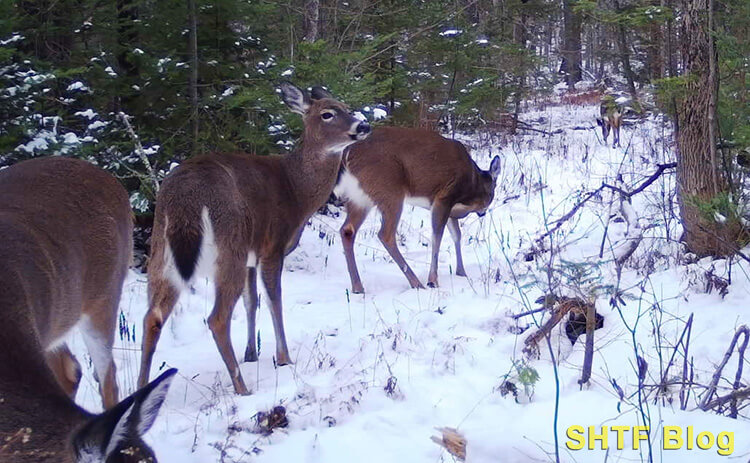
Deer shot placement is a question newer hunters are taught by fathers, grandfathers, and even hunter safety courses. “Aim behind the shoulder” works assuming a convenient broadside opportunity, but that’s not a guarantee.
As I write this, our state’s deer season has just come to a close. It’s a time when, for those of us who hunt, the first topic of discussion is invariably our successes and failures. A buddy of mine, Tom, recounted a tale involving a mutual acquaintance with limited hunting experience.
After repeated requests, Tom finally agreed to act as Bill’s guide and dropped him off at an improvised stand. Tom had barely reached his own destination when a shot rang out – followed by a lengthy pause – and then another. As it turned out, a nice eight-pointer appeared broadside at forty yards only to be greeted by a clean miss. Departing the area in overdrive, the buck paused in a narrow opening long enough for a second chance.
Guesstimating the range as 200 yards (questionable), Bill aimed for its neck, figuring the shot would either be a dead deer or another clean miss. A thorough search revealed no traces of the deer, so the likely outcome was the latter.
If you prefer a video version of this, see Derrick’s adaptation below:
Risky Shots
Bill gets a pass due to his lack of experience. He needn’t feel alone, either. Hunting license sales in my state have made a major rebound after a multi-year decline.
The reason? Perhaps a combination of new gun owners, expansion of our region’s deer herd, and the spiraling costs of groceries. After all, deer are made out of meat, a precious commodity nowadays.
Although the above tale probably did involve a miss, the third possibility is a wounded deer. Unfortunately, I’ve heard similar stories from others regarding supposed hit-or-miss headshots. One came from an experienced friend who tried one on a big buck; its head being the only part not obscured by brush.
The shot blew off the deer’s jaw. The buck was recovered after hours of tracking, but its suffering was no doubt off the chart. After that unfortunate episode, all further iffy opportunities, including head shots, were declared off limits. If nothing else, this fiasco illustrates the foibles of risky shots.
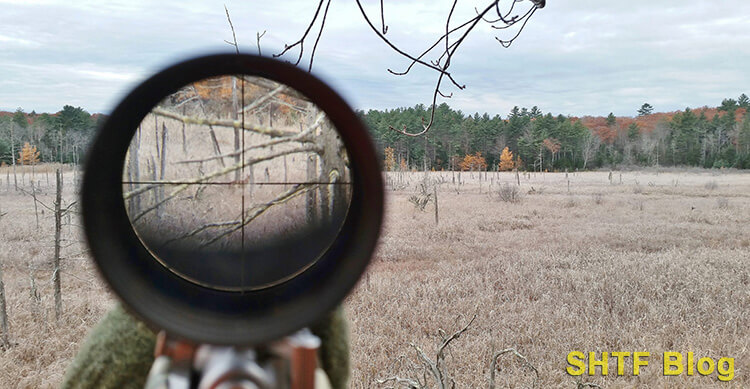
Test Yourself First
It’s worth trying a few shots on a target like an 8-inch paper plate. That diameter is larger than a deer’s brain, and may exceed the lethal neck-zone, but it’s not as challenging as a classic chest shot. If possible, round up a few other deer hunters before heading to the range.
Shooting distance should be determined by the group, slanted toward those with less experience. Just throwing out a figure, I’d stay inside forty paces. For the purposes of this exercise competitiveness should be encouraged.
The rules are simple enough: The shooting should be from offhand with the same firearms used during deer season!
Hang a separate target for each shooter. Taking turns, fire five standing shots from an unsupported position. The idea is to shoot at a hunting pace; not rushed, but not slow. The audience will no doubt scrutinize each shot, which tends to turn up the heat.
If everyone winds up with well-centered hits, great! Mark ‘em and back up at least twenty yards for another go.
The more likely outcome will be a collection of targets with one or two well-centered holes, some just inside the edges – and others conspicuously absent. What to do then?
Consider the results a learning experience. An 8-inch plate isn’t really all that big when viewed from forty paces. As famously stated, we all need to understand our limits. Move closer to regain some confidence, and plan for additional practice sessions – from positions that don’t involve shooting benches.
Moving Deer
During the time when I ran law enforcement-type ranges for a living, thanks to our largely rural state, a substantial portion of my shooters were hunters. In theory at least, these troops should possess above-average shooting skills (often the case).
The right mix could provide a smooth range session with enough remaining time for extra “training.” A life-size paper deer stapled to our moving target system was always an educational event – even if engaged at moderate trotting speeds inside 40 yards. Most hits appeared with a horizontal spread and quite a few were gut shots. Stationary results were much better, but they could still be humbling – especially if we threw in a couple head shots.
Some were on the money, but peripheral hits or misses were as common. One contributing factor was no doubt peer pressure related to lots of friendly jeering from the sidelines, not necessarily a bad thing. Accuracy requires control of the jitters common to many real-life deer encounters – especially those with impressive headgear.
A Few Concerns
Before delving into specific aiming points it’s worth considering a few prerequisites starting with basic marksmanship. This ties in with the 8” target which occasionally appears in print as a standard for proficiency. Presumably, if all shots fired offhand from 100 yards are hits, the person behind the rifle can claim true competency.
Based on personal observations (hundreds of shooters annually), I think it’s a darned hard goal to achieve, although certainly worthwhile. It also provides a useful way to gauge our personal limits.
Shooting Skills
If consistent hits aren’t possible at 50-yards without some type of support, you could consider that distance your reasonable limit for offhand shots. No shame in that. Heck, I’ll use a support whenever I can, any improvised rest from a tree trunk to a fence post, or the railing of a ladder stand.
Because most of my area is heavily wooded, the classic kneeling, sitting, and prone positions are seldom practical. However, they’re still worth learning to gain additional stability. If Bill had been able to assume a stable prone position, he might have wound up with more than track soup.
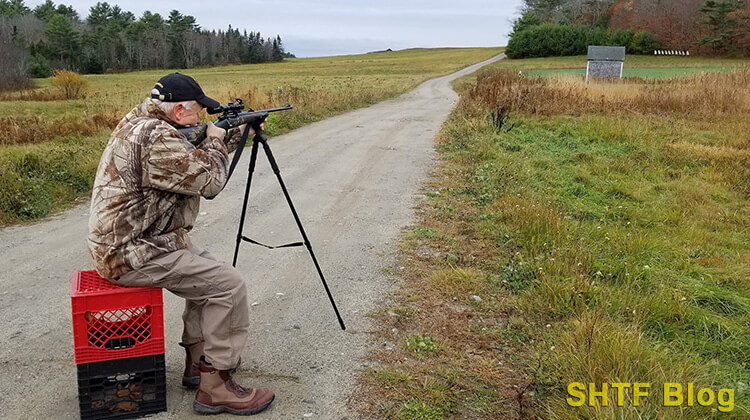
A word about “consistent” hits: Those who’ve never missed a deer probably haven’t done much hunting. As for shooting in general, we’re all gonna do some missing. A practice target doesn’t have to be an 8-inch plate; it’s a good aspirational goal, but a larger target can help build confidence.
Still, I wouldn’t exceed 12-inches at 50 yards. Start there and work your way down, shooting for a 90% average. To mix things up, try a horizontal brown IPSC Target without a distinct aiming point. Highly worthwhile: Wrap everything up with an anatomical deer target.
- Anatomically Correct: Realistic image of a life-size deer in a natural pose shows skeletal structure and location vital organs helping the hunter to more effeciently harvest a deer.
- Double Lung Target: The double lung aim point trains the hunter to place the shot through both lungs incapacitating large game in the most effective way possible.
- Sight Adjustment Grid: Use the 1" grid to make more accurate sight adjustments helping you to get your firearm or bow sighted in faster.
- A Better Target: Thompson Target uses thicker #60 paper and fluorescent inks printed at high density to give the shooter a superior shooting range experience.
- Made in the USA: All Thompson Targets are proudly made in the heartland of Ohio supporting local manufacturing and creating American jobs.
A .22 rifle offers a great way to improve skills. One of the most common shooting ailments is a built-in flinch. A hard habit to overcome, it’s often the result of an early introduction to a poor-fitting firearm with plenty of recoil.
A mild and affordable .22 LR offers a great way to overcome one while building on the basics of marksmanship. If the rimfire’s function is similar to a centerfire deer gun, so much the better. Many shooting maladies can also be avoided through manageable calibers and a properly fitted guns.
Use Enough Gun
Whitetail deer vary in size depending on where they live. To earn a Big Buck Patch in my state, you’ll need to tag one weighing at least 200 pounds – field-dressed. Live weight would be much more, and the chance for a patch could show up anywhere, making tried and true calibers safer bets.
People have asked if a .22 can kill a deer. Sure, but it’s not legal (or ethical) in most states. Some deer hunters use light-recoiling .223s and today’s better bullets. Those in my small circle have more confidence in the .300 Blackout using copper monolithics. At the other end of the spectrum, hard-kicking magnums can be hard on shooters and deer meat.
As a general rule of thumb, the .243 Winchester is a good minimum caliber for deer.
In between, a number of manageable calibers exist (.30/30, .260, .308, .30/06, etc.) that work well for deer. If you need to pick and choose your shots to accommodate a marginal caliber, it’s probably the wrong choice – and an unrealistic strategy.
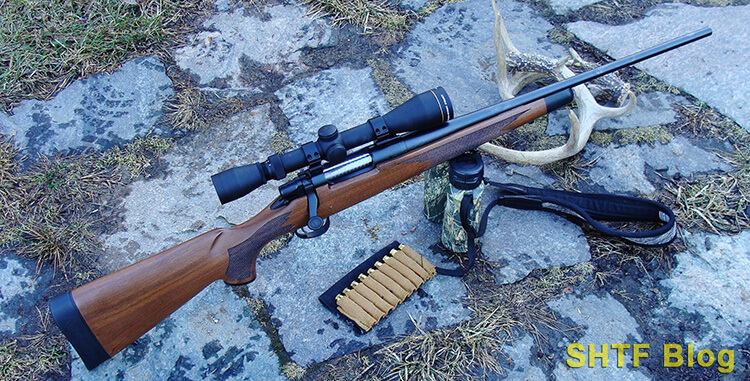
Choose the Right Bullet
Full metal jackets are a no-go, along with any non-expanding match types. Most will completely penetrate leaving narrow wound channels without immediate effects – probably leading to lengthy and fruitless tracking. Varmint bullets are designed to expand explosively and can produce nasty surface wounds on big game animals.
If driven to high velocities, some otherwise good bullets can stop deer in their tracks, but demolish an entire shoulder’s worth of meat. These factors tip the balance toward the more widely used deer calibers. Most of them offer a way to get the job done using basic and affordable soft-points.
Sight-In
Bore-sighting isn’t good enough, it’ll only get you on paper. Don’t rely on someone else’s zero, either. Instead, confirm by firing a few shots of your own. The whole sighting-in process is actually fairly simple once the basics are understood. Many eastern hunters sight-in at 100 yards.
If using flat-shooting calibers (.243, .270, ’06, etc.) in open spaces, a 200-yard zero may be preferable. Most will strike less than 2-inches high at 100 yards. But log some range time to be sure. Ethical hunting is dependent on a properly zeroed firearm.
Adrenaline
If your heart rate doesn’t increase upon the chance for a shot at a deer, you may not have any pulse at all. The extreme effect could be Buck Fever leading to a near-total meltdown. More common are wobbling crosshairs.
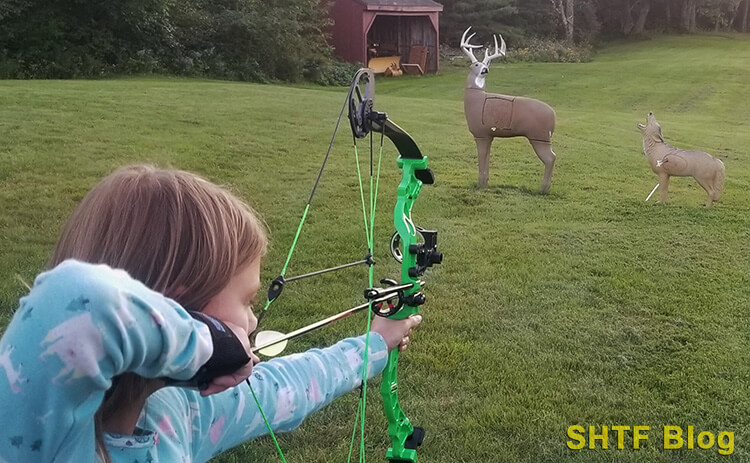
The cure? First, plenty of practice. Secondly, hunting experience. Meanwhile, recognize the symptoms and don’t rush the shot. Many long-time hunters (including me) still get wound up to some degree. Hence, the value of smaller practice targets that offer some “wiggle room” for nerves.
Proper Deer Shot Placement Photos
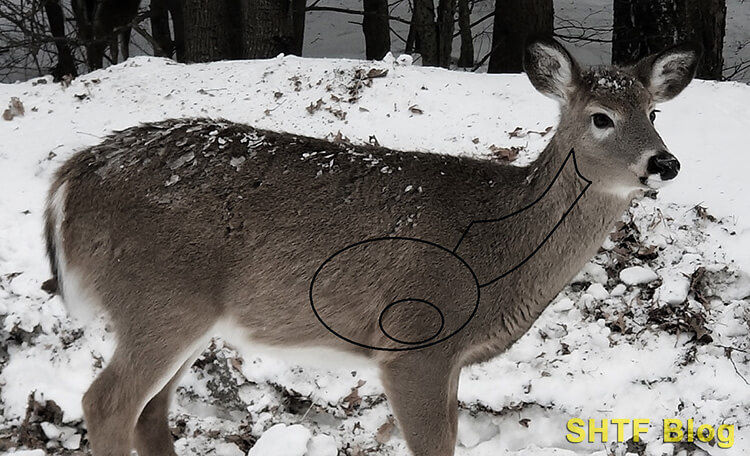
The overall best deer shot placement is in the chest where vital organs are held. Deer anatomy is standard, but opinions vary regarding the vital zone of a deer’s chest. It’s sometimes described as bowling ball sized.
This 8 ½-inch sphere (sound familiar?) offers a better way to visualize shots than a two-dimensional deer target – a reason archers use full-bodied 3-D targets.
Sharper angles require different aiming points, which can also decrease available vital zones. Although not perfect matches, the circles that appear below could be visualized as bowling balls.
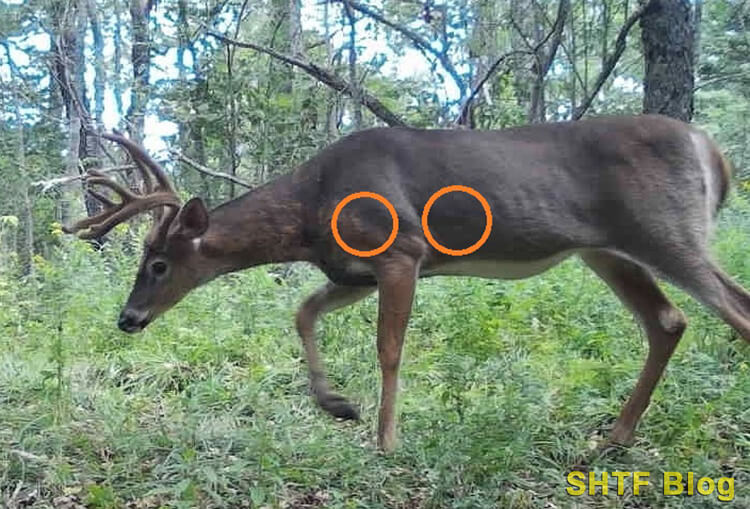
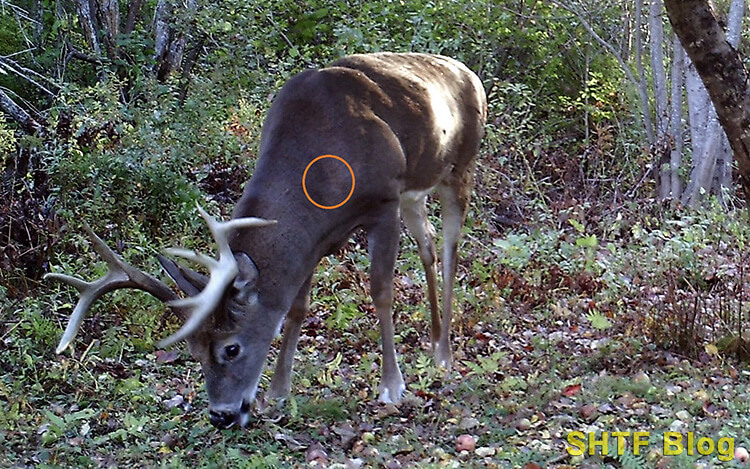
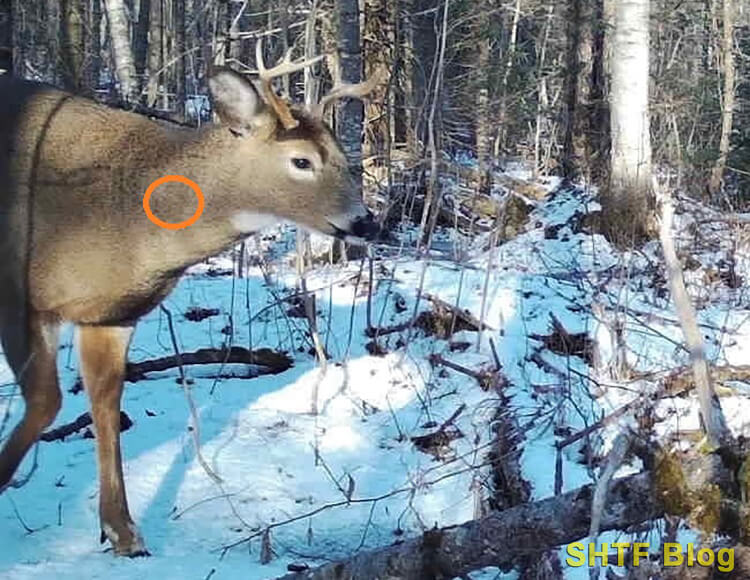
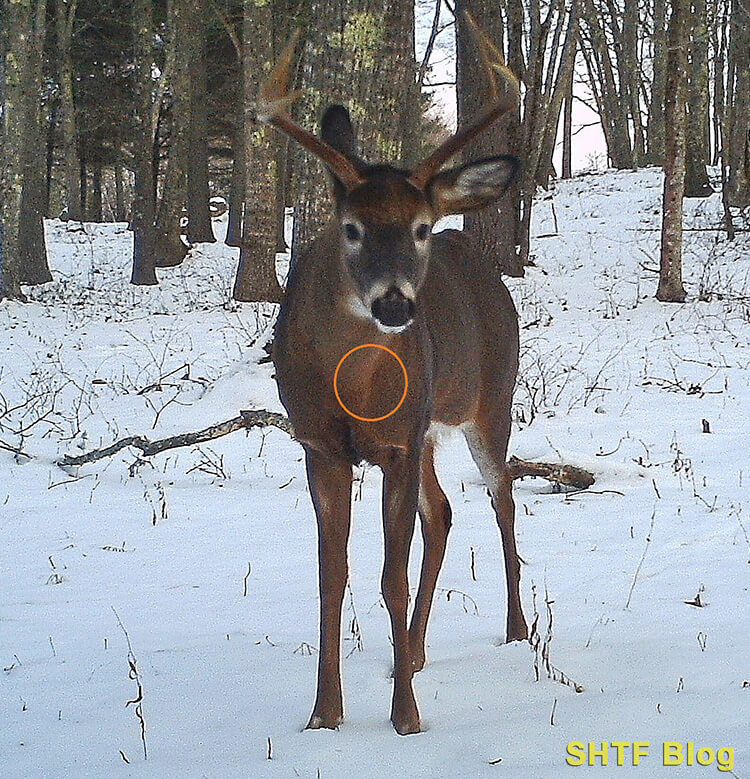
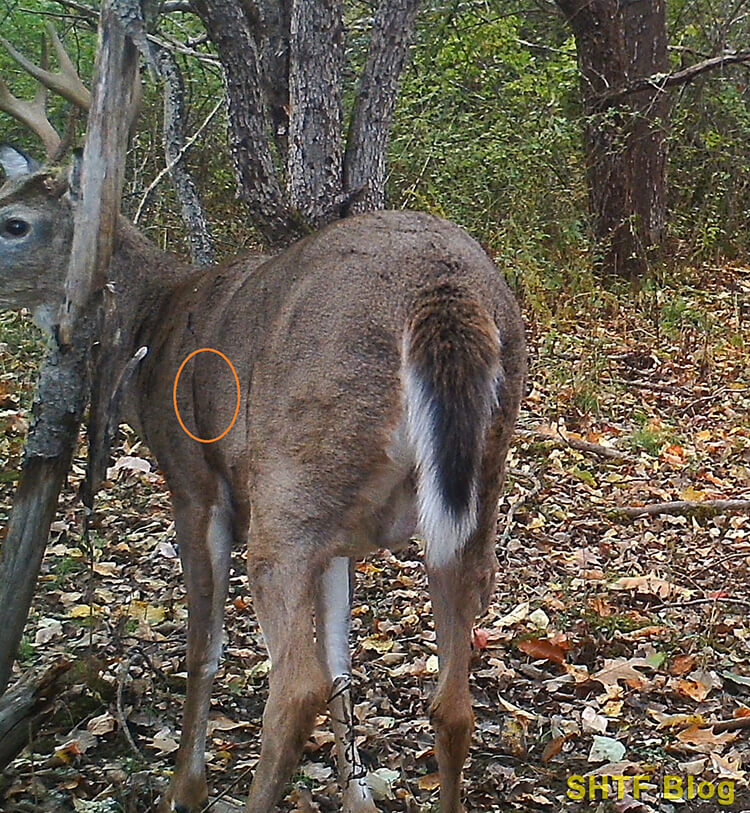
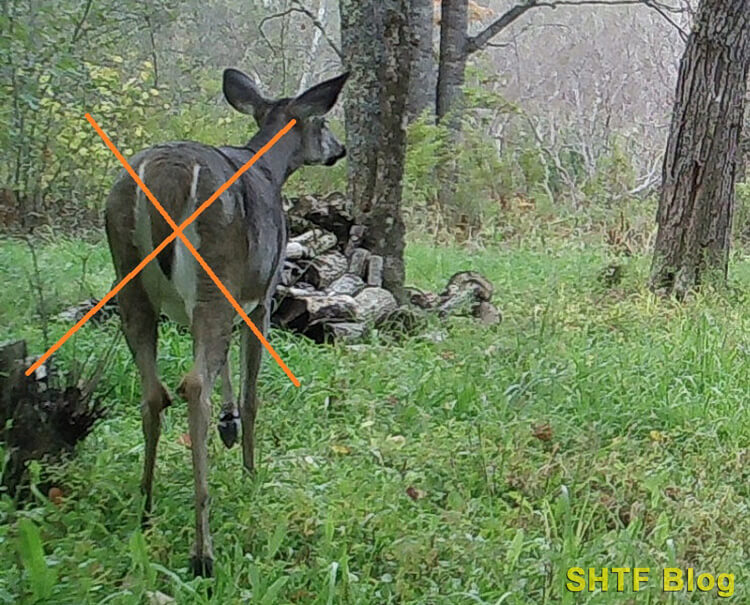
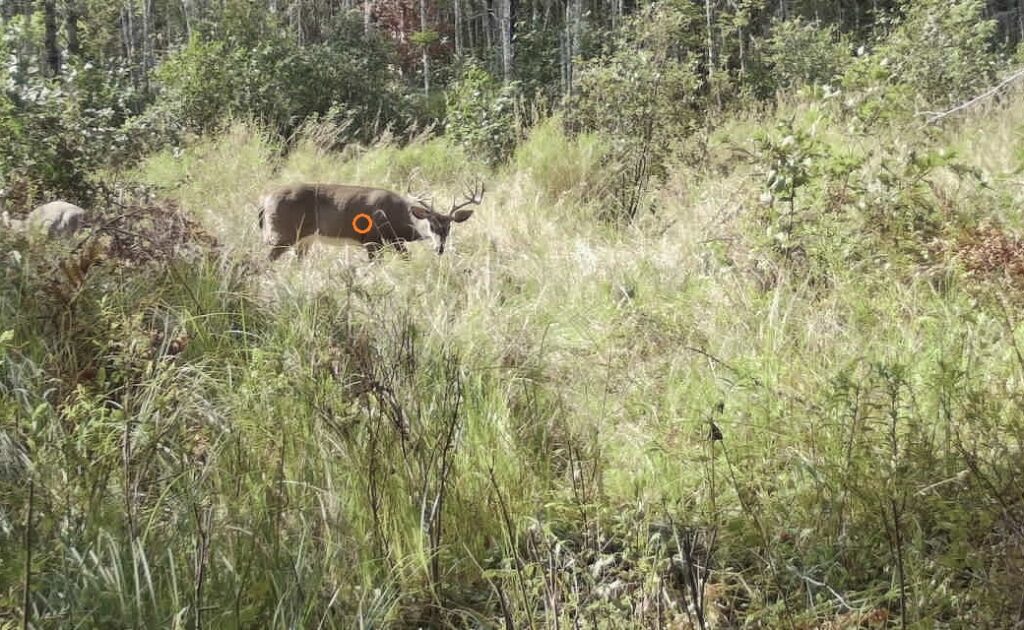
After the Shot
If the shot “felt good,” there’s a good chance it is – which doesn’t mean the deer will pile up. To the surprise of many newer hunters a mad dash is common. The deer could easily travel 100 yards despite a spot-on hit.
Better to sit tight for at least twenty minutes, regain some composure, and consider priority-one – firearms safety! The next step is a careful search. A tuft of hair and good blood trail is always reassuring…
Congratulations, you found your deer. Now the work begins! Field dressing and the recovery process are topics for another post. Meanwhile, thank heavens for cell phones. Beyond photos, they’re a great way to summon help.
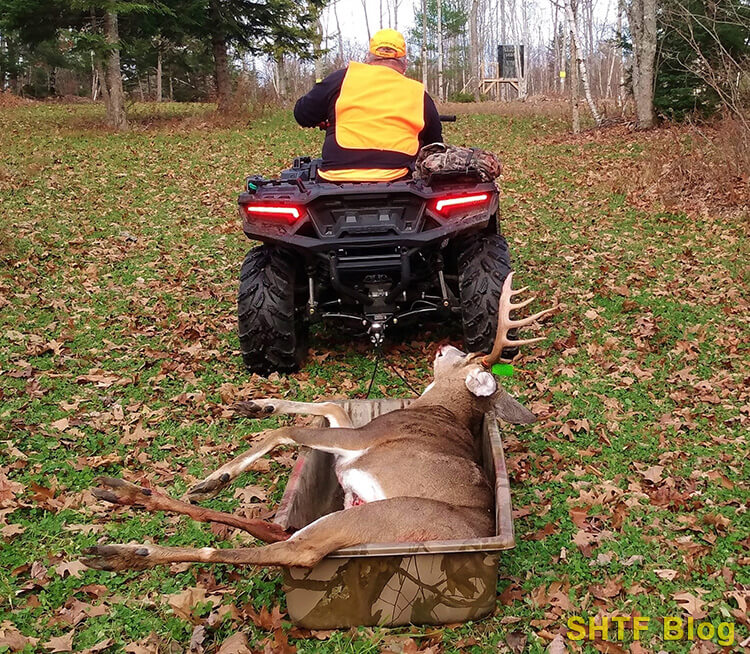
Worth understanding, you can do everything right and still lose – or worse – wound a deer. The bullet could strike a small branch, or the deer could take a step as the shot breaks. That’s why it’s best to play it safe with the largest kill-zone available.
- Bestul, Scott (Author)
- English (Publication Language)
- 256 Pages - 10/27/2020 (Publication Date) - Weldon Owen (Publisher)


